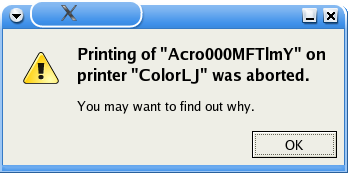I spent this weekend in a welter of frustration, all caused by blog add-ons and content management systems.
First thing, I saw that Jen had installed a plugin to enable her WordPress blog to embed Gallery images both in the content and on the sidebar. I used to have a “WPGallery” plugin, but it didn’t really work well when I switched to Gallery 2, so I haven’t used it in a while. This one promised to work on my current versions of WordPress and Gallery.
Except it didn’t. The blog entry editor allowed me to pick a picture to embed in my entry, but when it appeared on the blog it just said “** NOT FOUND **” where the picture was supposed to be. And when I attempted to do the sidebar thing, I just got an “Error 1”. Plus it was screwing up the comment system – if you attempted to comment on a blog post, you saw what looked like a Gallery themed message that said “database error”.
Ok, fine, time to get rid of that. Next on the list was to try to get a different content management system (CMS) working for my Browncroft Neighborhood Association test site.
I’d decided that the CMS I’d picked, MODX, wasn’t going to let me do all the stuff I wanted, or at least not easily. Unfortunately, the “test site” is appearing high on Google ranks and people are using it for real, so I couldn’t just blow it away and leave it blank while I’m fooling around with another CMS. So first I tried installing the new CMS, Xoops, on my personal web space somewhere. But Xoops is a bare-bones CMS with a huge library of plugins to install, and I couldn’t seem to get any of the plugins working. So I thought that maybe they didn’t like not being on the docroot, so I made a fake domain on my local DNS and installed it on the docroot. I tried about 6 different plugins, but none of them worked. Some of them threw errors that indicated they were trying dangerous programming practices that my version of php explicitly warns you not to enable in the php.ini file. Others just would show an empty screen or a menu that didn’t actually do anything in the module configuration page.
That’s when I decided that I’d follow the recommendations of a few people the last time I’d asked about CMSes, and install typo3. The problem with typo3 is that the documentation is abysmal, and it basically sneers at you for needing it in the first place. It also tells you it’s going to take weeks to get your web site set up, and maybe you should consider hiring one of the many typo3 consultants instead.
I’m still struggling to get my first page up on typo3. I put in some content, and then it complained I didn’t have a template. So I chose one of the templates, and the content showed up, but there is no menu or anything else that I’d expect on a CMS page. Since the template choice page didn’t give you any indication which templates did what, I want to switch to a different one and it won’t let me. Every time I go back to the template page, it shows me stuff about the existing one, and I can’t for the life of me figure out how to go back to the choice page.
All I want is a simple CMS that works the way it’s supposed to work and which is easier to set up than hand-coding an entire site. Is that so hard?

 Some Linux developer considered this a decent error dialog. Can I get a “Sheesh” from the crowd?
Some Linux developer considered this a decent error dialog. Can I get a “Sheesh” from the crowd?